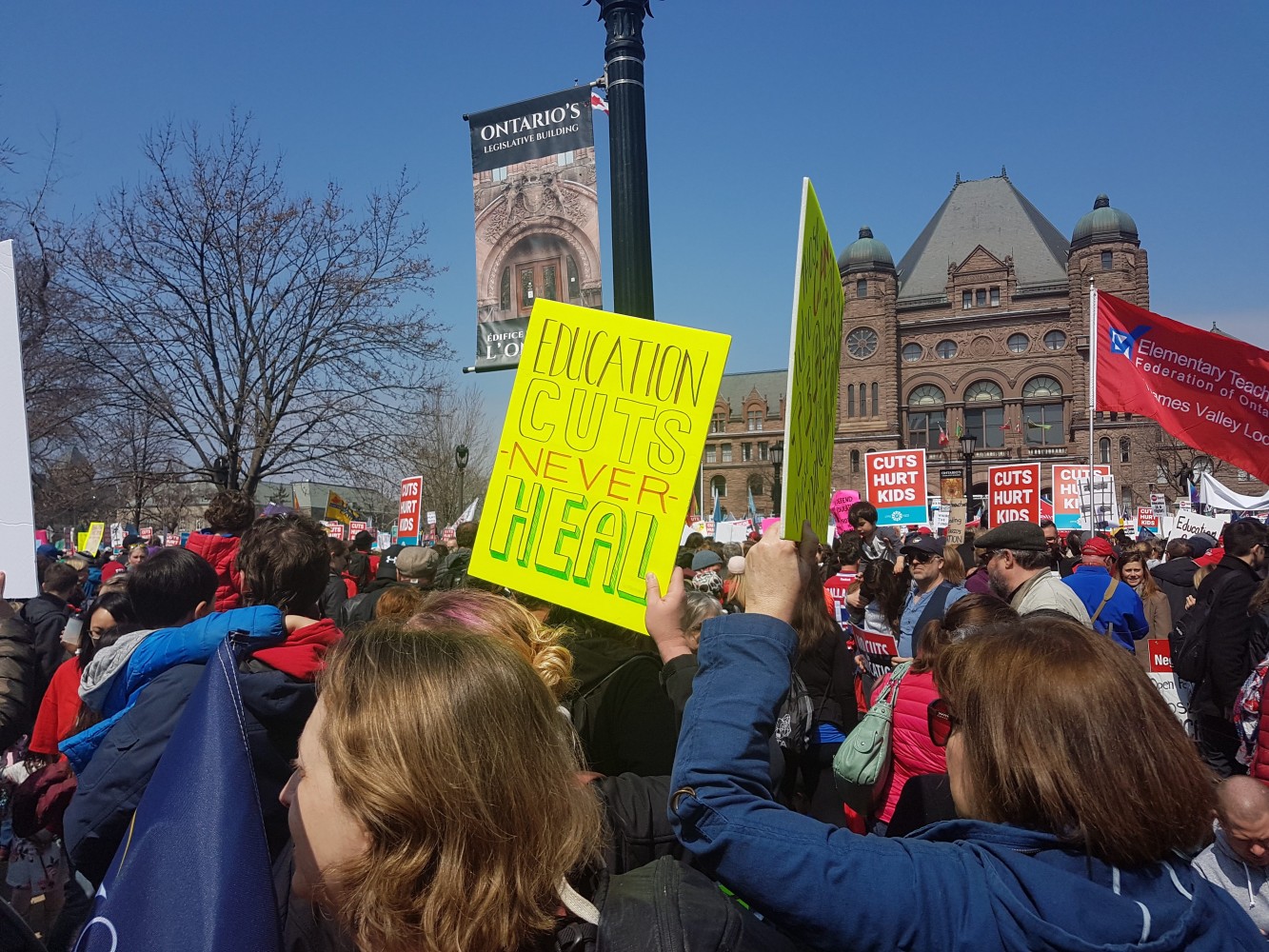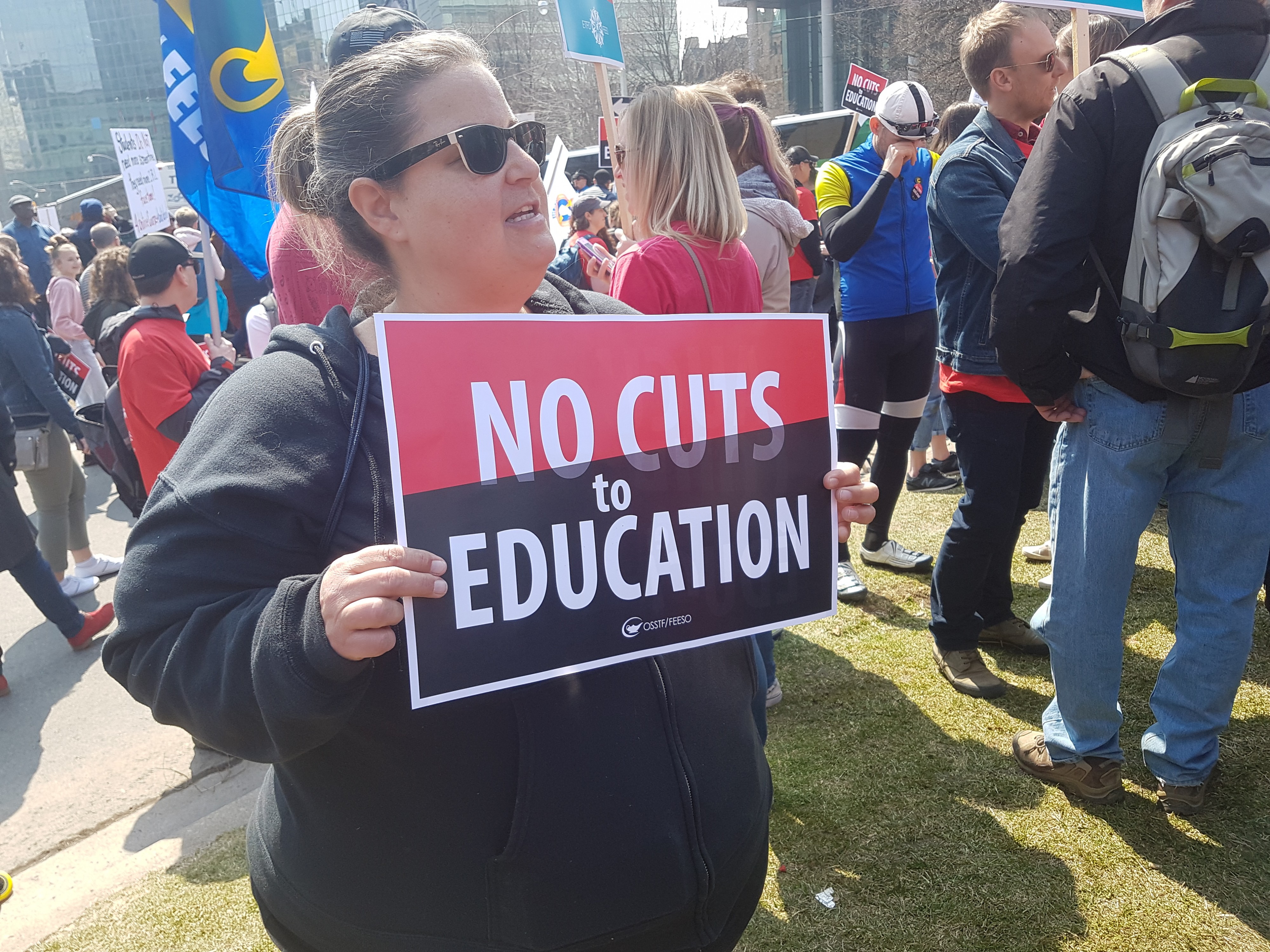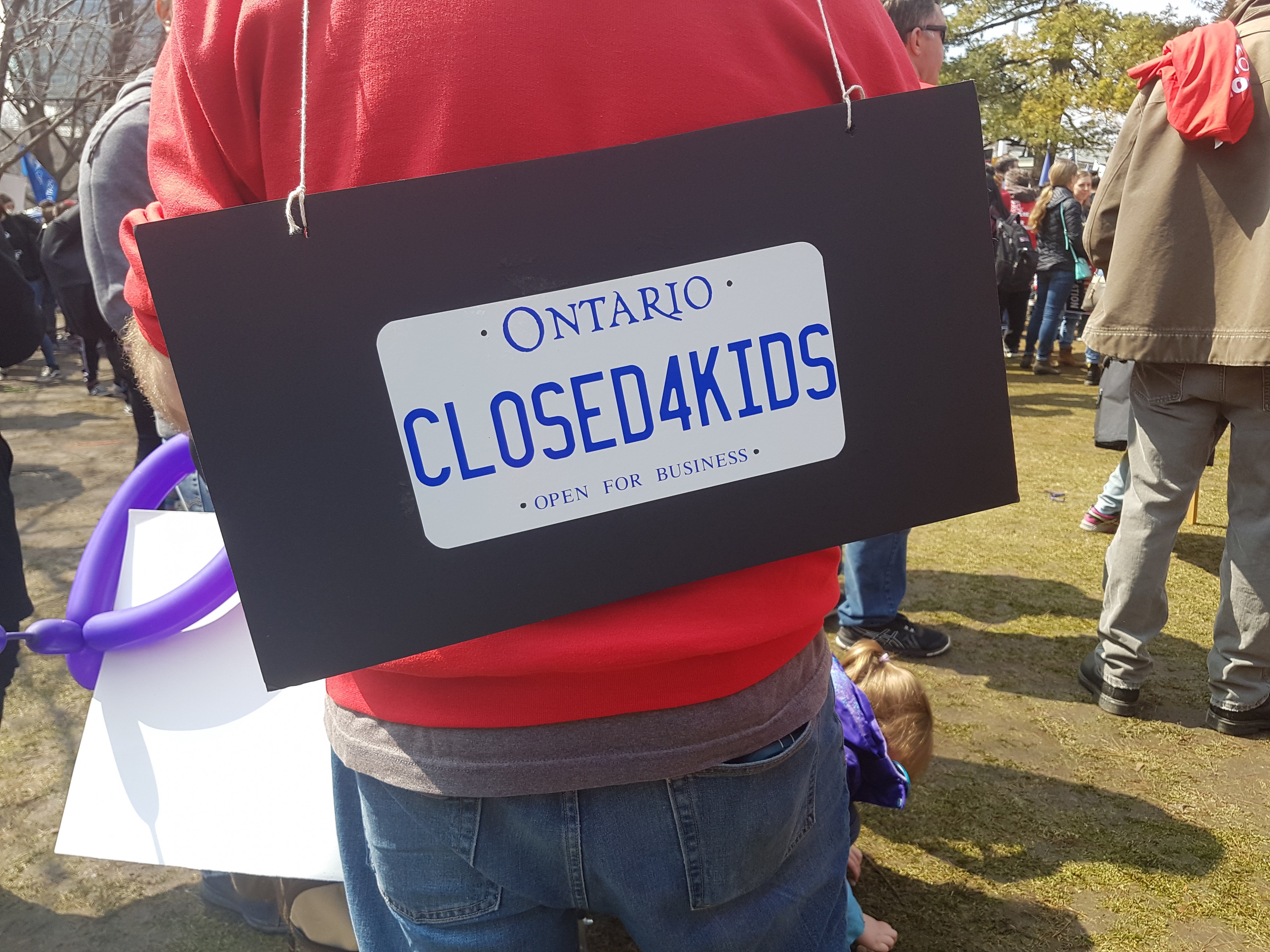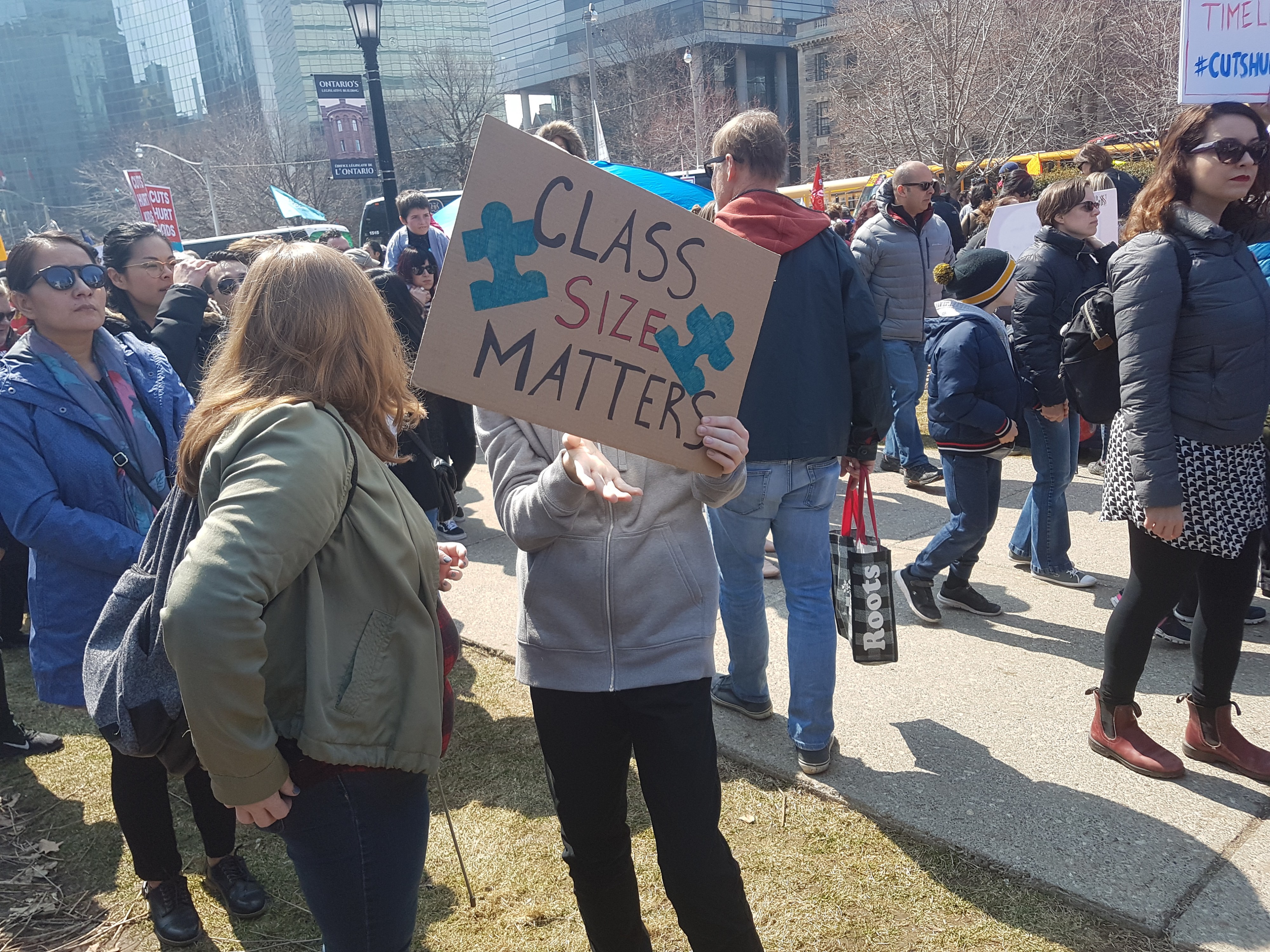
Secondary school teachers’ union says it’s ready for strike vote after ‘incessant stalling’
Here we go again: The union representing Ontario’s high school teachers says it will begin the process of a strike vote.
In a phone interview on Wednesday, Ontario Secondary School Teachers’ Federation (OSSTF) President Harvey Bischof said there is no decision yet on when the strike could occur. “We are taking strike votes. That could take until November 15,” Bischof said.
Perturbed by a lack of progress in negotiations, Bischof said in a news release Tuesday that the province had “done nothing to help expedite the process, and now they are simply refusing to discuss substantive issues on the bargaining table.”

Teachers protest cuts to eduction outside Queen's Park in April.
The announcement comes just over a week after school closures were narrowly averted by an 11th-hour deal struck between CUPE and the province. The union, which represents non-educational staff like clerical workers and custodians, was proposing its own strike.
Teachers’ contracts expired at the end of August, and they have been working without a bargaining agreement for over a month and a half. In the release, Bischof said it was thanks to the province’s “incessant stalling and delay tactics that it took months for bargaining to get underway in the first place.”
Minister of Education Stephen Lecce’s office did not immediately respond to requests for comment.
“We served notice to bargain on April 29,” Bischof told The Pointer. “So it’s been five and a half months since we served notice to bargain. They could have met us within a day or two of serving notice to bargain but instead they waited the full 15 days allowable under the legislation.”
The first time OSSTF sat at the table with the government was on May 14. After the parties hit a deadlock on which issues will be discussed, Bischof said, the union offered to bring in an arbitrator to resolve the conflict and start “real bargaining.”

When that was rejected, the OSSTF went to the Labour Relations Board (LRB) to decide on the bargaining issues. In September, the LRB ruled that two of the union’s biggest sticking points, class sizes and sick days, were indeed provincial matters. The union had argued those subjects were best discussed between individual boards and the union locals. Bischof said that was one more delay in reaching this point. “We could not even be in a legal strike position prior to the decision of the labour relations board,” he said.
The decision, however, came out September 6, and the strike vote was announced Tuesday. Asked why they didn’t call a strike vote the same week, the OSSTF president said the union “had not done any substantive bargaining [yet]. We waited for the decision of the labour board; we set dates to meet with the government and the school board association.”
Ever since then-minister of education Lisa Thompson told the public last spring her government will increase class sizes, parents, teachers and unions have been at loggerheads with the province. An average of one extra student was going to be added to Grades 4 to 8 classrooms, and high school classes were going to increase from an average of 22 students to 28.
The result: 330 teachers in the Peel District School Board, both elementary and high school, were served in April with “surplus to board” notices stating there were not enough positions to keep them employed. Most of those teachers now have their jobs back in one capacity or another.
The province is also requiring students to take four courses in their final year through e-learning. Instead of taking lessons in a classroom setting with a teacher, they learn using online modules and tests. Critics point out that school boards in rural areas do not have strong internet connections and some students who have a more hands-on learning style might not benefit.

The OSSTF’s bargaining bulletin, at bargainingforeducation.ca, provides the latest updates on what was discussed with the “management team” — a collective name for the province and Ontario Public School Boards’ Association. In its last update on October 11, the management team did not bring any new proposal regarding class sizes, e-learning, staffing levels, sick leave or inflationary adjustments to benefits and salaries. All are significant bargaining points.
The Elementary Teachers’ Federation of Ontario (ETFO) is not part of the OSSTF decision. They are currently holding mass meetings with their members till the end of the month to discuss bargaining.
“Holding a central strike vote is one part of the legal bargaining process under Ontario labour laws. ETFO’s central strike vote will be held at information meetings conducted in the Federation’s 76 locals during late September and October,” reads a statement by ETFO President Sam Hammond that was sent to The Pointer.
“ETFO’s goal is to reach an agreement at the central bargaining table without having to take job action.”
Email: [email protected]
Twitter: @mansoortanweer
Submit a correction about this story


